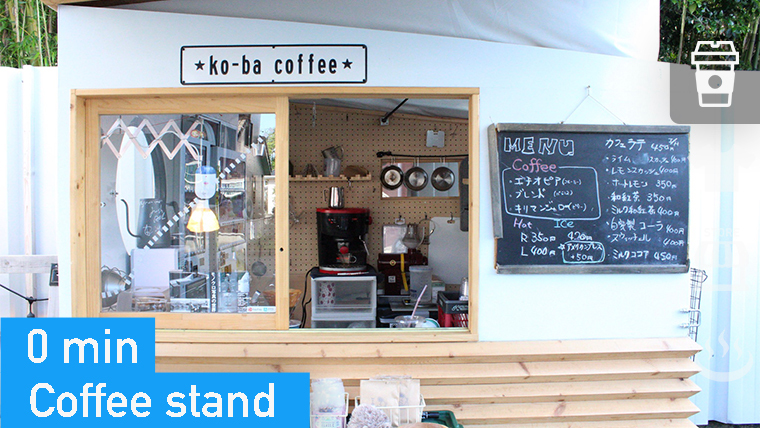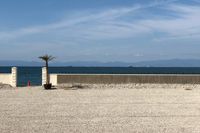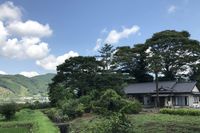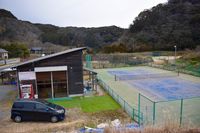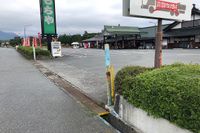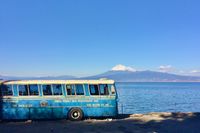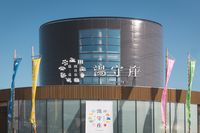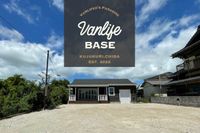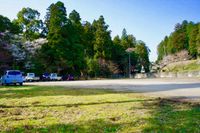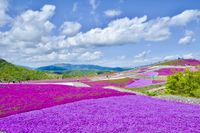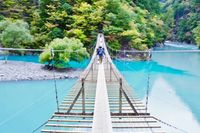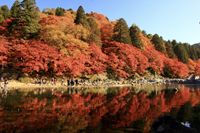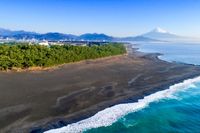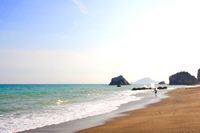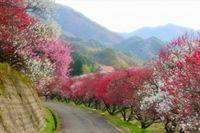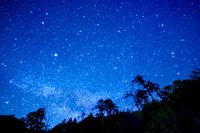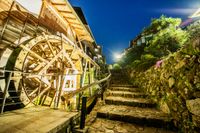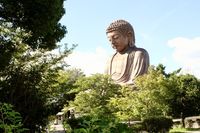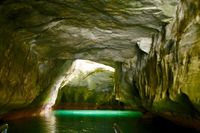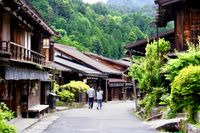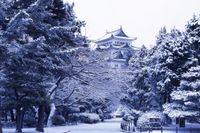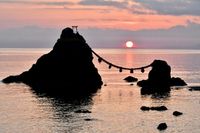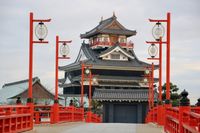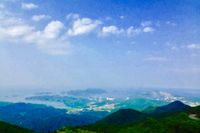3,000 JPY 〜/24 hours
4.51

33
Coffee stand.You can use laundry till 1 am.
1/13
place to carstay
2/13
by Coffee Stand
3/13
by Coffee Stand
4/13
Coffee Stand
5/13
Coffee Servise
6/13
There is a Coin laundry in Carstay Station
7/13
Near by 7-11(ConvinceStore) and AEON(Shopping mall)
8/13
There is Two Onsens near here.
9/13
Reccomended Spa
10/13
View of Coffee Stand
11/13
View of Coffee Stand
12/13
View of Coffee Stand
13/13
Three points in Local
Shizuoka Ken/Nakajo, Hamamatsu Shi Hamakita Ku
3,000 JPY 〜/1 night
4.51 (37)
Description
A commercial facility parking lot managed by local Hamamatsu city, with laundry, coffee shop and aerial yoga combined into one. Excellent access from the freeway. We will also introduce you to public baths and Japanese-style bars. Go Local!
Inquire about a camping station or its booking requirements up-front
Contact a HostBasic Facilities
24h Toilet
Water
WiFi
Playground
Pets Allowed
Smoking Area
Vending Machine
Washing Dryer
Waste Water Discharge
Security Cameras
EV Charger Stand
Administrator
Additional Fee Facilities
Electricity socket
¥500/day
Non-free Wifi
Not available
Non-free Shower
Not available
Onsen (Adult)
Not available
Onsen (Child)
Not available
Dustbin
¥300/bag
Dog Park
Not available
Camping Behavior Allowed
Not available
Tent (For 2-3 people)
Not available
Tent (For 4-5 people)
Not available
Cooking Allowed
Not available
BBQ Facilities Rental
Not available
Bonfire Allowed
Not available
Nearby Facilities
Convenient Store
7-11 (100m)
Supermarket
Max Valu (1000m)
Gasoline
ENEOS (1000m)
Restaurant
LIFE (0m)
24h Toilet
7-11 (100m)
Onsen
Tsuki to Kaze (3000m)
Parking space
Maximum lots:2 lot(s)
Parking Area Size:Length 5.5m・Breadth 2.3m・Height 制限なし
Note
Free drip coffee at the coffee shop. Restroom at the laundry room available from 5:00 to 25:00.
Cancellation Deadline
17:00, 2 days before (Japanese time)
If you cancel your reservation after the Cancellation Deadline, cancellation fee will be applied. Cancellation rate can be checked here
Availability status
Please click a date to see the availability of car
Sun | Mon | Tue | Wed | Thu | Fri | Sat |
|---|---|---|---|---|---|---|
30 | 1 | 2 | 3 | 4 | 5 | 6 |
7 | 8 | 9 | 10 | 11 | 12 | 13 |
14 | 15 | 16 | 17 | 18 | 19 | 20 |
21 | 22 | 23 | 24 | 25 | 26 | 27 |
28 | 29 | 30 | 31 | 1 | 2 | 3 |
Sun | Mon | Tue | Wed | Thu | Fri | Sat |
|---|---|---|---|---|---|---|
28 | 29 | 30 | 31 | 1 | 2 | 3 |
4 | 5 | 6 | 7 | 8 | 9 | 10 |
11 | 12 | 13 | 14 | 15 | 16 | 17 |
18 | 19 | 20 | 21 | 22 | 23 | 24 |
25 | 26 | 27 | 28 | 29 | 30 | 31 |
Reviews
4.51(37 reviews)

タケゾー
5.00Sat, May 17, 2025

航平 荒木
5.00Fri, February 28, 2025

木村 伸一
5.00Thu, February 20, 2025

Tomas Arano
5.00Mon, September 2, 2024
friendly, answered questions quickly, spot is quiet and in a good location
Translate To English

user.deletedAccount
5.00Sun, May 5, 2024
ナオさんの料理が美味しい。そして人柄もグッドです。 静かなところで熟睡できます。
Translate To English
3,000 JPY 〜/1 night
4.51 (37)
Reservation Deadline Time : No dead line (You can book anytime)
Check In
Check Out
Nearby Car Night Spots
Mochimune Fishing Point RV Park - Calstreet
¥1,500〜
/ per nightShizuoka Mochimune, Suruga-ku Shizuoka-shi,
4.7
(3)(Bonfire BBQ) Chita Mihama Noma Beach Station
¥3,500〜
/ per nightAichi Noma, Mihamacho, Chita County
4.7
(42)(Power supply available/facilities for rain) Apples bonfire station Fruit Garden Kitazawa
¥4,000〜
/ per nightNagano Oshima, Matsukawacho, Shimoina-gun
4.9
(21)Nearby Activities
There is no nearby activities
Ranking Stations
Vanlife BASE | 45 min. from Narita Airport / Perfect for campervan travel/A seaside town rich in nature/Japanese countryside town/welcome traveler
¥7,000〜
/ per nightChiba Koseki, Kujukuri-machi, Sambu-gun
5.0
(61)(Bonfire BBQ) Chita Mihama Noma Beach Station
¥3,500〜
/ per nightAichi Noma, Mihamacho, Chita County
4.7
(42)Nearby Drive Spots
Chausuyama Kogen
This is a plateau spreading between Mt. Chausuyama with an altitude of 1415 m and Mt. Hagitaro that has an altitude of 1358 m. During the period from May to June, there are around 400,000 moss plants of 7 different varieties bloom on the vast grounds of 22,000 square meters, in a variety of pinks, light purples, and whites. There are plenty of facilities here such as the vacation village, art museum in Takahara, Yahazu Pond, Rest House, Tenkuan, and a pasture ranch.
Sumata Gorge
This is a valley of Sumata River in central Shizuoka prefecture. It is famous for its "dream suspension bridge" which is about 90 meters in length and extends to Oma dam lake and is about 8 meters in height. The name comes from the fact that it is not only meant to represent a fantasy landscape, but also because of the feeling of fear crossing it, almost as if in a dream.
Korankei Gorge
Located in Aichi Prefecture, this is a valley formed in Tomoe River. Many tourists visit Taigetsukyo Bridge in the autumn season, where the autumn leaves and "katakuri" flowers (dogtooth violet) can be seen.
Miho no Matsubara
This is a scenic spot in Miho Peninsula, which is registered as a World Heritage Site along with Mt. Fuji. It is famous for the beautiful view of Mt. Fuji and Izu Peninsula, and has a total length of 7 km, with 36,699 pine trees and Suruga bay that comes in between. It has appeared in Manyoshu, the oldest Japanese poem in Japan, in Japanese ukiyo-e imagery and has fascinated many historians.
Koijigahama Beach
This is a sandy beach of about 1 km, at the tip of the Atsumi peninsula. The area is so called, due to a legend that a couple of noble status were engaged in an illicit love affair and banished from their home, and lived in this area. There is a lighthouse on the cape, and is a popular dating spot with its beautiful sunset views.
Hirugami Onsen
This is an Onsen in Achi Village, and was discovered in 1973 when a tunnel was being built in this area. Near the Achi River, there is an onsen that is beautifully integrated into the natural landscape. It is also possible to view amazing starscapes on a clear night. Between mid April and early May, the peach blossoms also come into bloom.
Achi Village
This is a village situated in the southern part of Nagano prefecture. With its ideal altitude, clear area and surrounding mountains and stunning starscapes and cloud scapes below, the area has been recognized by the Japanese ministry of environment as the best star viewing area in Japan. Peach flowers also bloom in this area from mid April to the beginning of May.
Magome-Juku
This is the 43rd town inn which is located on the Nakasendo road, which links Tokyo (Edo at the time) and Kyoto, built during the Sengoku era(1467-1600). It has the traditional cobbled stone paths that were present originally, and is one of Japan's few traditional villages whose buildings are preserved today. Along with Tsumagoi-Juku it is one of the flagship tourist destinations of Kiso road.
Shurakuen Garden Buddha
This Buddha statue became witness to the marriage of the Emperor Showa in 1927 by Yamada Saikichi. It is a statue of one of the great Buddhas known as Amida Nyorai, with a height of 19 meters, larger than Buddha statues in places like Kamakura and Nara. Inside the park there is a camping area and public bathing facilities.
Dogashima Tensodo Cave
This is a famous viewing spot, known as the Matsushima of Izu. As part of the roof of the cave has collapsed, light pours in certain areas, creating an other worldly sight. Pleasure boat cruises that travel from the coast to inside the cave are particularly popular.
Tsumago-Juku
This is the 42nd town inn which is located on the Nakasendo road, which links Tokyo (Edo at the time) and Kyoto, built during the Sengoku era(1467-1600). It has appeared in Ukiyo-e art and Utagawa Hiroshige, and is one of Japan's few traditional villages whose buildings are preserved today. Along with Magome-Juku it is one of the flagship tourist destinations of Kiso road.
Nagoya Castle
This castle was built by Tokugawa Ieyasu in 1609, one of Japan's three great castles. It was used as a residence of 17th generation of the Tokugawa family until the Meiji era(1868-1912). The Golden Shachihoko (a Japanese sea creature with the head of a tiger and body of a carp) became the symbol of Nagoya. The castle is known both as Golden Shachihoko Castle and Golden Castle.
Couple Rock(Ise)
This is a large rock in Futami Okitama Shrine in Ise city, Mie prefecture. It was believed that rocks and mountains housed gods and became objects of worship, with Torii gates built as a path for the gods to walk along. Nowadays, the rock is seen as a symbol to bring harmony to married couples, safety at sea, or bountifulness.
Kiyosu Castle
This is a castle founded in 1405 by Shiba Yoshishige. It was widely known as the headquarters of Oda Nobunaga in 1555, and subsequently the Toyotomi and Tokugawa families became the castle owners, and it was used until 1613. The present castle tower reproduces the ornate Momoyama culture of the Azuchi-Momoyama period(1568-1600).
Ise-Shima Skyline
This is a mountain road linking Ise Jingu and Toba City. The road was purpose built as a driving destination for visitors to see the Toba bay. The road opens from 7am to 7pm.
Related Posts
Eri-Taku Couple goes car camping at Shizuoka's famous coffee stand Nao-san Toko
【VANLIFE JAPAN】Eri-Taku Couple goes car camping at Shizuoka's famous coffee stand Nao-san Toko
#Carstay #VANLIFEJAPAN #EritakuCouple




